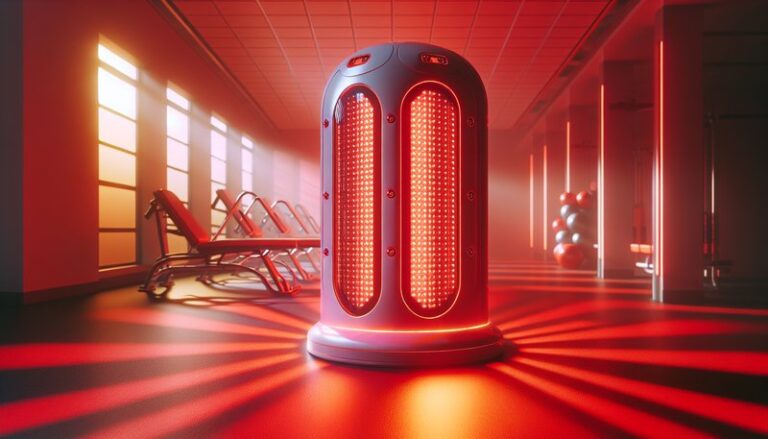Does Red Light Therapy Help With Nerve Damage?
Does Red Light Therapy Help With Nerve Damage?
Have you ever wondered if emerging therapies could offer relief for nerve damage? Red light therapy, a treatment method that uses low-level wavelengths of light, has gained traction in recent years for its potential to aid in various health conditions, including nerve-related issues. This article will explore how red light therapy may benefit nerve damage, the science behind it, and considerations for those contemplating this treatment.
Key Takeaways
- Red light therapy uses specific wavelengths of light to promote healing and reduce inflammation, potentially aiding in nerve damage recovery.
- Various studies have indicated that red light therapy can enhance cellular function and support recovery in nerve tissues.
- While generally safe, there are several considerations and alternatives that should be explored before starting treatment.
What is Red Light Therapy?
Red light therapy (RLT) is a non-invasive treatment that utilizes specific wavelengths of red and near-infrared light to promote healing. The therapy works by penetrating the skin and stimulating cellular processes, including ATP production, which is crucial for repairing damaged tissues.
The mechanism of RLT relies primarily on photobiomodulation, a process where light photons are absorbed by cellular mitochondria, leading to various beneficial biochemical effects, including increased circulation, reduced inflammation, and enhanced cellular functioning. This makes RLT a promising candidate for addressing nerve damage, as these benefits can aid the healing process.
What are the Benefits of Red Light Therapy?
The benefits of red light therapy, particularly in relation to nerve damage, are gaining attention in the medical community. Below are some notable advantages:
Enhanced Cellular Repair
Research suggests that RLT can stimulate the proliferation of nerve cells, promoting faster repair of damaged nerves. This could be particularly beneficial for patients with conditions like peripheral neuropathy or nerve injuries.
Reduced Inflammation
RLT has been shown to reduce inflammation, which can be a critical contributing factor to nerve pain and damage. By minimizing inflammation, it may help alleviate symptoms and create a more conducive environment for healing.
Pain Relief
Several studies have indicated that RLT can effectively reduce pain associated with nerve damage. Patients report decreased discomfort, potentially improving their quality of life.
Improved Circulation
Red light therapy can enhance blood flow, which is vital for delivering essential nutrients and oxygen to the injured nerves. This improved circulation can facilitate recovery and regeneration.
Is it Possible to Use Red Light Therapy for Nerve Damage?
Yes, it is possible to use red light therapy to promote healing in cases of nerve damage. However, the effectiveness can depend on various factors, including the severity of the nerve damage, the underlying cause, and individual patient responses to the therapy.
What are the Advantages of Using Red Light Therapy?
Utilizing red light therapy for nerve damage comes with several advantages:
Non-invasive Treatment
RLT is a painless, non-invasive option for those seeking relief from nerve damage without resorting to medications or surgical interventions.
Minimal Side Effects
Generally, red light therapy is considered safe, with few reported side effects. Patients may experience slight warmth, but severe reactions are rare.
Accessibility
Many clinics and therapeutic centers offer RLT, and personal devices are also available for at-home use, making it a broadly accessible treatment option.
What are the Disadvantages of Using Red Light Therapy?
While RLT holds promise, there are several disadvantages to consider:
Effectiveness Varies
Not all patients may respond to red light therapy, and the extent of improvement can vary significantly based on the individual’s specific condition and biological response.
Requires Consistency
For optimal results, patients may need to commit to multiple sessions over time, which could pose challenges in terms of time and financial resources.
Limited Research
While many studies indicate benefits, the body of evidence is still growing. More robust, large-scale clinical trials are needed to fully understand its efficacy and establish standardized protocols.
What are the Things to Consider Before Using Red Light Therapy?
Before starting red light therapy for nerve damage, it’s essential to consider the following factors:
Find all the details in Can Red Light Therapy be used over clothing?
Consult Your Healthcare Provider
Before beginning any new treatment, it’s crucial to consult with a healthcare professional. They can provide guidance on whether RLT is suitable for your specific nerve damage situation.
Evaluate Your Condition
Understanding the underlying cause of your nerve damage is critical. RLT may be suitable for certain conditions but not for others.
Find out more in How Long for Red Light Therapy to Work?
Follow Protocols
If you decide to proceed with RLT, ensure you are following recommended protocols for treatment duration and frequency to maximize benefits.
What are the Alternatives to Red Light Therapy?
If red light therapy doesn’t resonate with you, several alternative treatments can also aid in nerve damage recovery:
Physical Therapy
Physical therapy involves exercises and techniques that can help rehabilitate nerve damage and improve mobility, often with the guidance of a trained therapist.
Transcutaneous Electrical Nerve Stimulation (TENS)
TENS therapy uses electrical impulses to relieve pain and stimulate nerves, offering an alternative approach for managing nerve-related issues.
Acupuncture
This traditional Chinese medicine technique has been shown to relieve pain and improve nerve function in some patients, making it a viable alternative to explore.
Conclusion: Is it Recommended to Use Red Light Therapy for Nerve Damage?
In summary, red light therapy presents a promising avenue for those dealing with nerve damage due to its ability to enhance healing, reduce inflammation, and alleviate pain. However, individual responses may vary, so it is critical to consult with a healthcare professional and weigh potential benefits against disadvantages. For some, RLT may serve as an effective complementary treatment among other therapeutic options.
Frequently Asked Questions
How long does it take to see results from red light therapy for nerve damage?
Results can vary widely among patients, but many may start to notice improvements within a few weeks of consistent treatment.
Is red light therapy safe for everyone?
While generally considered safe, individuals with certain conditions or those taking specific medications should consult a healthcare provider before beginning treatment.
Can I perform red light therapy at home?
Yes, personal RLT devices are available for home use, but it’s vital to follow guidelines and safety instructions to ensure effective treatment.
Are there any contraindications for red light therapy?
Individuals with specific medical conditions, such as photosensitivity or active cancer, should consult their healthcare provider before using RLT.





